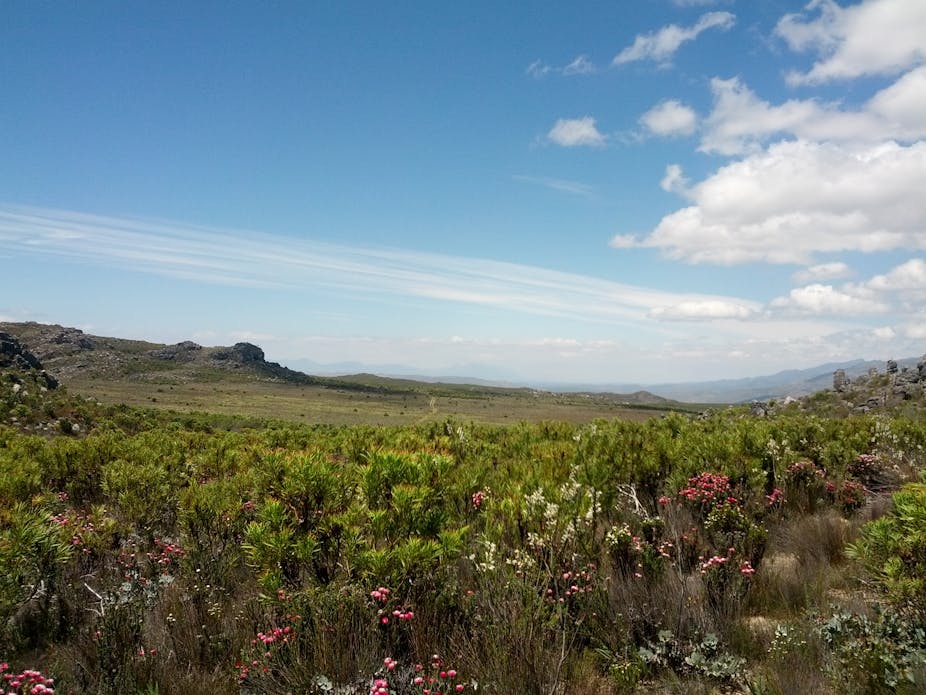Globally, droughts have had a negative impact on many plant species. This has led to much higher rates of mortality than usual. Understanding how different species are likely to respond to drought is crucial to accurately predicting the impact of future climate change on plant communities.
It can be extremely challenging to find meaningful ways to describe plants’ many different types of responses to drought, particularly in biodiverse areas. Scientists have been working to develop a new system in which plant functional traits can be used to assess the range of drought tolerance in diverse plant communities.
Why some plants shrivel and die and others don’t
Although it may be tempting to think that drought is bad for all plant species, there is tremendous variation in their sensitivity to drought.
For several decades, plant scientists have been attempting to figure out what determines this variation. But there are no simple universal measurements of drought tolerance. Instead, scientists usually rely on long-term experimental manipulations.
The difficulty of assessing drought tolerance makes it challenging to work with large numbers of species. It is critically important that we do so, particularly within the world’s biodiversity hotspots – they are incredibly important systems for the planet. They include the tropical rainforests – the lungs of the planet – and many economically significant ecosystems such as South Africa’s fynbos.
Trade-off between water loss and carbon uptake
A recent paper offers a solution to the challenge. It proposes using simple plant characteristics or traits to identify the different strategies that species adopt to cope with drought.
The beauty of using plant traits is that they are relatively easy to measure, and can be gathered for a large number of species. The system uses combinations of easily measured plant traits to get an index for drought tolerance in much the same way as body mass index works in humans. You can measure relatively simple traits like weight and height and combine these to determine how a person might react to stress or exercise.
To predict how different plant species respond to drought the researchers focused their trait selection on the classic water-loss versus carbon-uptake trade-off that plants face. When land plants open their stomata to allow carbon dioxide to enter the leaf for photosynthesis, they inevitably lose water. This creates a carbon-uptake-water loss trade-off, particularly under water limiting conditions.
During periods of drought plants face a dilemma – to continue to photosynthesise and risk desiccation or close the stomata to conserve water but risk starvation.

Tracking two plant traits
The scientists recognised that two plant traits would be critical to determine which side of the trade-off different species tended to err towards.
The first trait relates to how a plants’ internal plumbing responds to dehydration: the ability of the xylem to withstand desiccation. Water is transported from the soil through the stem to the leaves under tension, which gets greater under drought stress.
When the plants become too dehydrated the water column breaks and air enters the stem, which blocks the vessel. This is similar in some sense to an embolism in human arteries and is potentially as fatal for a plant as it prevents them from moving sugars to where they are needed.
The second trait relates to the breathing apparatus, or stomatal response of a plant. Stomata operate like variable resistors on the leaf surface, opening and closing in response to desiccation. The sensitivity of the stomata varies between species. In some species they may be highly responsive to changes in water status and less so in others.
Scientists have known for a while that both xylem vulnerability and stomatal response varies between species. But the association between these traits and the ability of a species to survive droughts remained unclear.
The key missing element was how the xylem and stomatal responses are co-ordinated within a species. Very few studies have addressed co-ordination between stomatal regulation and xylem vulnerability and then used this to predict how likely a species is to die during drought.
Lessons offered up by Fynbos
To test the system, the authors studied fynbos communities in South Africa’s Western Cape. These highly species-rich plant communities are recognised as one of the world’s biodiversity hotspots and contain three major plant functional types: the familiar proteas, restios and ericas.

Different species adopted a continuum of strategies. It ranged from a risky, low safety-margin response to a more conservative approach to water loss. A key finding was that species which were more conservative and closed their stomata earlier in response to desiccation were less likely to incur xylem embolism. On the other hand, species that closed their stomata later were more likely to incur xylem embolism.
It was also possible to make predictions about how different species might die during drought. Worryingly, the study suggests that many restios and ericas appear to be particularly sensitive to drought. This may lead to shifts in the future composition of fynbos communities.
On a more positive note, the study also showed that all three familiar fynbos plant types had representative species from the full range of responses. This suggests we are less likely to see any one plant type disappear. It highlights the importance of biodiversity for landscape resilience. Having species of each functional type respond differently to drought may allow a community to be more resilient in the face of change.

